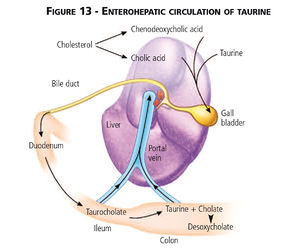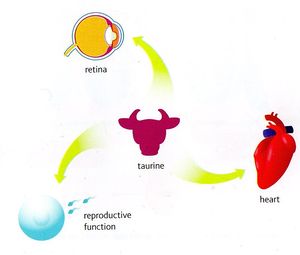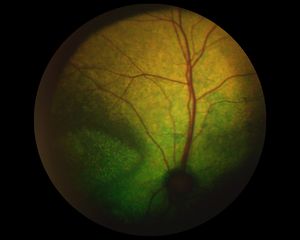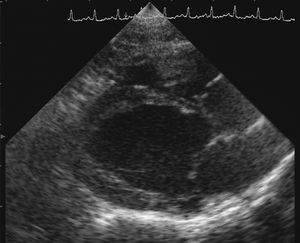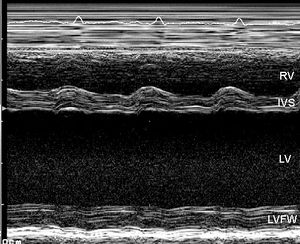Taurine - Nutrition
What is Taurine?
Taurine (2-aminoethanesulfonic acid) is a naturally occurring sulphonic acid produced in the liver as an end product of cysteine metabolism. Taurine is not incorporated into proteins but found free in animal tissues; the highest concentrations are found in brain, heart, and skeletal muscle. Although commonly referred to as an amino acid it lacks a carboxyl group and is not classified as a true amino acid. Dogs can synthesise taurine from dietary precursors and are typically able produce amounts sufficient to meet daily needs. Cats are unable to produce adequate amounts of taurine to meet requirements and pre-formed taurine is required in the diet.
Why is it Important?
The importance of taurine is related to its roles in many different organ systems, especially brain and heart. Deficiency results in serious and sometimes irreversible conditions. Therefore it is important to have an understanding of how animals may develop deficiencies and be aware of strategies to avoid or treat deficiencies.
Roles in the Body
Taurine is used in the conjugation of bile acids into bile salts in both dogs and cats. Cats only use taurine to form bile salts while dogs are able to conjugate bile acids to either taurine or glycine depending on availability of either amino acid[1][2]. Cats are unable to switch conjugation to glycine like dogs and other species and have an obligate loss of taurine in faeces. Bile salts are deconjugated in the intestinal lumen by bacteria and the deconjugated bile acids return to the liver via enterohepatic circulation. Taurine is then either absorbed by enterocytes, excreted in faeces, or further utilized by intestinal bacteria.
Taurine also plays a role in normal retinal and myocardial function, osmoregulation, platelet aggregation, modulation of calcium flux within cells, reproduction, and immune response.
There are three established clinical syndromes related to taurine deficiency:
- feline central retinal degeneration (FCRD),
- dilated cardiomyopathy (DCM), and
- reproductive failure.
Consequences of Taurine Deficiency
Dog:
Taurine-deficient DCM has been reported in dogs[3][4][5][6]. This can occur despite being fed commercial diets labelled as complete and balanced when the diet provides inadequate supply of sulphur amino acids without additional taurine supplementation; contains poorly digestibly proteins[7]; contains a higher fibre content that promotes a high faecal losses of bile salts[8]; or is fed to a large breed dog with a low capacity for synthesis of taurine[6][9]. Regardless of cause, taurine supplementation in these dogs appears to reverse some of the changes in cardiac function[3][4][5]. Taurine supplementation is recommended for all dogs presenting with DCM until taurine deficiency has been ruled out.
Recognised Syndromes Related to Taurine Deficiency
- Dilated Cardiomyopathy: The most well described consequence of taurine deficiency in dogs is the development of DCM[3][4][5][6]. In this condition dogs develop right-sided cardiac failure with exercise intolerance, ascites and in some cases severe cardiac output failure. This condition may respond to cardiac support and taurine supplementation. Recommended doses include 500-1000 mg taurine orally three times a day. Cases of DCM not related to taurine deficiency may not respond to supplementation.
- Retinal Lesions: Blindness related to taurine deficiency is not common in dogs, but there are reports of dogs with low plasma taurine concentrations described to have hyper-reflective retinal lesions, similar to Feline Central Retinal Degeneration (FCRD) in cats[10]. This syndrome is not as well characterised as it has been in cats and little information regarding prognosis and response to treatment is available.
Cat:
Taurine is an essential nutrient in cats due to:
- Reduced activity of hepatic cysteine dioxygenase and cysteine sulphinate decarboxylase activity (two key enzymes in the conversion of cysteine to taurine) as compared with other species[11] and
- An obligate loss of taurine in bile acid conjugation. Clinical signs of taurine deficiency may develop in a matter of weeks to months of feeding a deficient diet.
Recognised Syndromes Related to Taurine Deficiency
- Feline Central Retinal Degeneration (FCRD): Taurine deficient cats develop hyper-reflective lesions in the area centralis of the retina, which progresses to complete photoreceptor degeneration and ultimately blindness[12]. This condition is not reversible, but is very rare in cats fed diets with adequate taurine content.
- Dilated Cardiomyopathy: Taurine deficiency in now an uncommon cause of DCM in cats as commercial diets are supplements with adequate taurine levels. Cats with taurine-deficient DCM may present with subclinical disease or in overt heart failure. Echocardiography usually demonstrates left atrium enlargement, dilation of both ventricles (see image), and decreased left ventricular contractility[13]. Supplementation with oral taurine (250 - 500 mg orally twice a day) may improve clinical signs in 1-3 weeks.
- Decreased Immune Response: Prolonged taurine deficiency in cats can result in a range of abnormalities in the immune system, including leukopenia, neutrophil dyfunction depletion of cells from B-cell areas of lymph nodes and spleen[14]. The clinical significance of immune dysfunction related to taurine deficiency is not well described.
- Poor Reproductive Performance: Although taurine-deficient cats come into oestrus normally dietary taurine deprivation adversely affects feline pregnancy[15] it is associated with:
- abortion,
- stillbirths,
- reduced litter size,
- low birth weight, and
- poor kitten survival.
- Taurine deficiency in queens has also been associated with congenital defects in kittens such as hydrocephalus and anencephaly, cerebellar dysgenesis, abnormal hind-limb development and thoracic kyphosis[16][17]. Taurine-deprived, live-born kittens have a poor postnatal survival rate, maturational delay, and reduced growth rates[15]. Surviving kittens are often small and weak and are prone to various complications.
- 5. Deafness: Taurine deficiency has been associated with delayed auditory brainstem-evoked response maturation in cats resulting in hearing loss[18].
Toxicity
There are no known reports of toxicity either acute or chronic related to feeding high doses of taurine. Given the body’s ability to excrete excess taurine in faeces and degradation by intestinal microbes, toxicity risk is low.
Dietary Sources
Taurine is found in animal proteins, with highest concentrations in skeletal and heart muscle, though concentrations will vary by species[19]. Taurine is also lower in dairy and egg proteins and it limited to absent in plant proteins. Vegetarian and vegan diets will cause taurine deficiency in cats if not supplemented adequately; vegetarian and vegan diets for dogs often contain inadequate sulphur amino acid precursors and are at a high risk for causing taurine deficiency in dogs. Synthetic forms of taurine are available for vegetarian and vegan diets. Diets severely restricted in protein may provide insufficient quantities of amino acids to support adequate taurine production in dogs[20]. Processing and cooking of foods will also influence taurine content and animal requirements. Wet food diets promote higher intestinal bacterial population and will increase loss of taurine in cats[21][22]; boiling increases meat taurine loss compared to roasting or baking[19], and dietary fibre content will influence rate of taurine loss[7][23]. Vegetarian diets are deficient in taurine, in addition to other key nutrients for cats, and should not be fed without proper supplementation.
Diagnosing Taurine Deficiency
Diagnosis of taurine deficiency is based on compatible clinical signs and demonstration of low fasting plasma and low whole blood taurine concentration. Deficient or inadequate sulphur amino acid content in the diet may also help establish a diagnosis although difficult to analyse. Fasting plasma concentration reflects the labile pool of taurine and is prone to processing errors. A better indicator of taurine status is provided by assaying whole blood taurine content as this is believed to reflect tissue levels. Normal plasma taurine concentration in cats range from 50-250 nmol/mL and 60-145 nmol/ml in dogs. Results < 40 nmol/mL is highly suggestive of a deficiency in cats and dogs. Whole blood taurine concentrations are normally > 300 nmol/mL in cats and > 200 nmol/mL in dogs and values < 160 nmol/mL are considered to reflect a deficient state although many clinical cases have < 50 nmol/ml.
References
- ↑ Rabin J, et al. Dietary influences on bile acid conjugation in the cat. J Nutr 1976;106:1241-1246.
- ↑ Wildgrube HJ, et al. Naturally occurring conjugated bile acids, measured by high-performance liquid chromatography, in human, dog, and rabbit bile. J Chrom. 1986;353:207-13.
- ↑ 3.0 3.1 3.2 Fascetti AJ, et al. Taurine deficiency in dogs with dilated cardiomyopathy: 12 cases (1997-2001). JAVMA 2003;223:1137-1141.
- ↑ 4.0 4.1 4.2 Belanger MC, et al. Taurine-deficient dilated cardiomyopathy in a family of golden retrievers. JAAHA 2005;41:284-91.
- ↑ 5.0 5.1 5.2 Kittleson MD, et al. Results of the multicenter spaniel trial (MUST): taurine- and carnitine-responsive dilated cardiomyopathy in American cocker spaniels with decreased plasma taurine concentration. JVIM 1997;11:204-211.
- ↑ 6.0 6.1 6.2 Backus RC, et al. Low Plasma Taurine Concentration in Newfoundland Dogs is Associated with Low Plasma Methionine and Cyst(e)ine Concentrations and Low Taurine Synthesis. J Nutr 2006;136:2525-2533.
- ↑ 7.0 7.1 Torres CL, et al. Taurine status in normal dogs fed a commercial diet associated with taurine deficiency and dilated cardiomyopathy. JAPAN(Berl) 2003;87:359-72.
- ↑ Delaney SJ, et al. Plasma and whole blood taurine in normal dogs of varying size fed commercially prepared food. JAPAN(Berl) 2003 Jun;87(5-6):236-44.
- ↑ Ko KS, et al. Differences in taurine synthesis rate among dogs relate to differences in their maintenance energy requirement J Nutr 2007;137:1171–1175.
- ↑ PD, et al. The effectiveness of taurine and levocarnitine in dogs with heart disease. Vet Clin N Amer Sm Anim Prac 1998;28:1495-514.
- ↑ De la Rosa J et al. Metabolism of cysteine and cyteinesulfinate in rat and cat hepatocytes. J Nutr 1987;117:549-558.
- ↑ Anderson PA, et al. Biochemical lesions associated with taurine deficiency in the cat. J Anim Sci 1979;49:1227-1234.
- ↑ Pion PD, et al. Myocardial failure in cats associated with low plasma taurine: a reversible cardiomyopathy. Science 1987;237:764-768.
- ↑ Schuller-Levis G, et al. Immunologic consequences of taurine deficiency in cats. J Leukoc Biol 1990;47:321-331.
- ↑ 15.0 15.1 Sturman JA. Dietary taurine and feline reproduction and development. J Nutr 1991;121:S166-S170.
- ↑ Sturman JA, et al. Feline maternal taurine deficiency: Effect on mother and offspring. J Nutr 1986;116:655-667.
- ↑ Sturman JA and Lu P. Role of feline maternal taurine nutrition in fetal cerebellar development: and immunohistochemical study. Amino Acids 1997;13:369-377.
- ↑ Vallecalle-Sandoval MH, et al. Comparison of the developmental changes of the brainstem auditory evoked response (BAER) in taurine-supplemented and taurine-deficient kittens. Int J Dev Neurosci 1991;9(6):571-9.
- ↑ 19.0 19.1 Spitze AR, et al. Taurine concentrations in animal feed ingredients; cooking influences taurine content. JAPAN(Berl) 2003 Aug;87(7-8):251-62.
- ↑ Sanderson SL, et al. Effects of dietary fat and L-carnitine on plasma and whole blood taurine concentrations and cardiac function in healthy dogs fed protein-restricted diets. AJVR 2001;62:1616-1623.
- ↑ Anantharaman-Barr G, et al. Fecal bile acid excretion and taurine status in cats fed canned and dry diets. J Nutr 1994;124:2546S-2551S.
- ↑ Kim SW, et al. Dietary antibiotics decrease taurine loss in cats fed a canned heat-processed diet. J Nutr 1996;126:509-515.
- ↑ Stratton-Phelps M, et al. Dietary rice bran decreases plasma and whole-blood taurine in cats. J Nutr 2002;132:1745S-1747S.
| This article was: Date reviewed: 18 May 2015 |
| Endorsed by WALTHAM®, a leading authority in companion animal nutrition and wellbeing for over 50 years and the science institute for Mars Petcare. |
Error in widget FBRecommend: unable to write file /var/www/wikivet.net/extensions/Widgets/compiled_templates/wrt695a6fa3e98af0_89332067 Error in widget google+: unable to write file /var/www/wikivet.net/extensions/Widgets/compiled_templates/wrt695a6fa40180b0_18490816 Error in widget TwitterTweet: unable to write file /var/www/wikivet.net/extensions/Widgets/compiled_templates/wrt695a6fa40e2331_83060086
|
| WikiVet® Introduction - Help WikiVet - Report a Problem |
